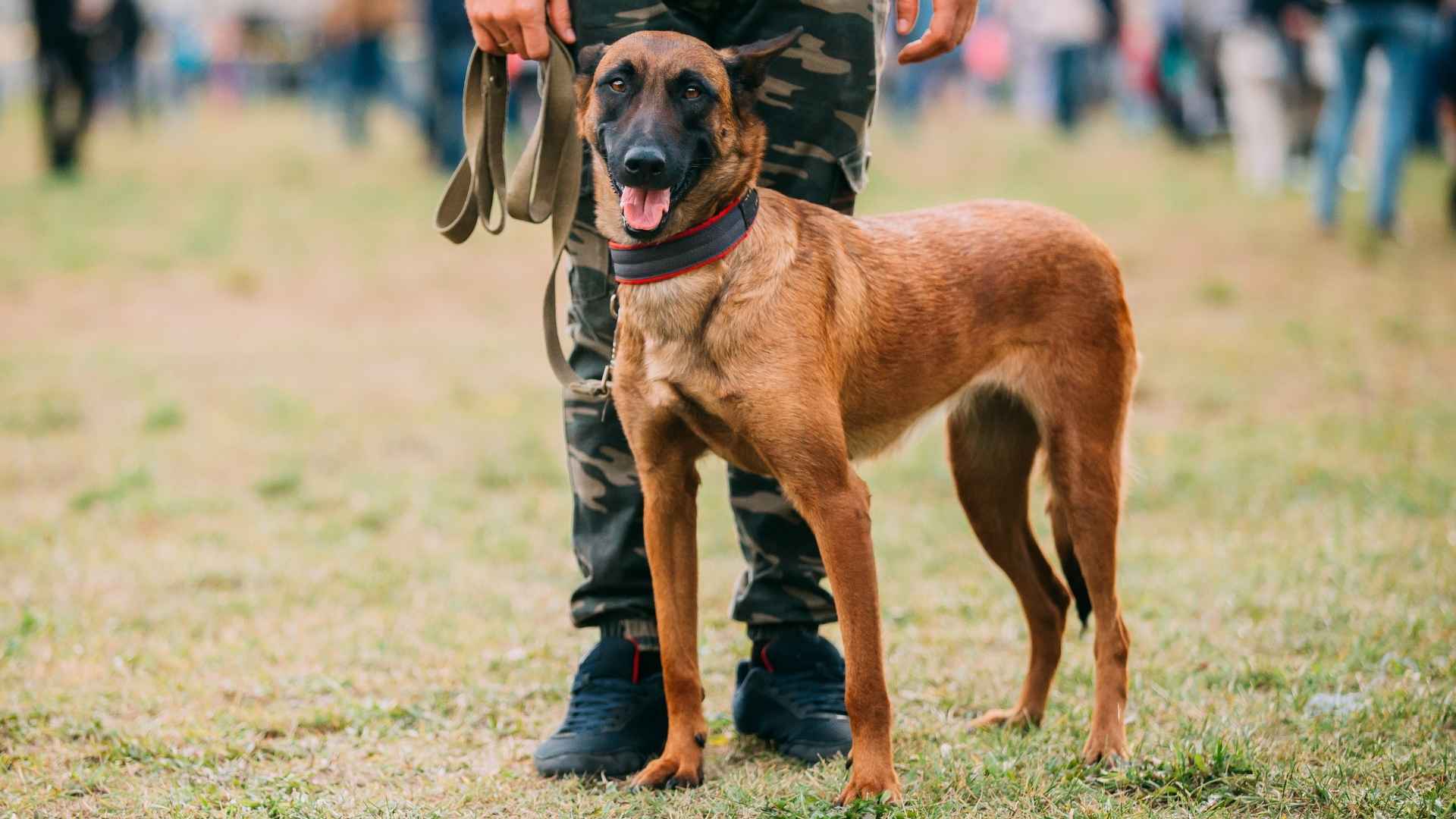Whether you’re looking to protect your home, your loved ones, or simply gain peace of mind, a guard dog can be a loyal and reliable companion. These dogs are more than just living alarms; they’re vigilant, courageous, and possess an instinct to defend their pack. And while they often get labeled as aggressive, the truth is, their strength lies in loyalty, not hostility.
What sets great protection breeds apart is their combination of intelligence, trainability, and a calm, confident demeanor. With the right socialization and consistent training from a young age, these dogs become not only fierce defenders but also naturally affectionate family members. Many thrive in environments where they feel a clear sense of purpose, keeping watch over their territory and protecting those they love.
In this article, we’ll highlight some of the best dog breeds for protection, those known for their bravery, strength, and dependable nature. Whether you’re seeking a devoted guard for your property or a trustworthy partner in everyday life, there’s a breed suited to your lifestyle and needs.
Best Dog Breeds for Protection
1. Akita
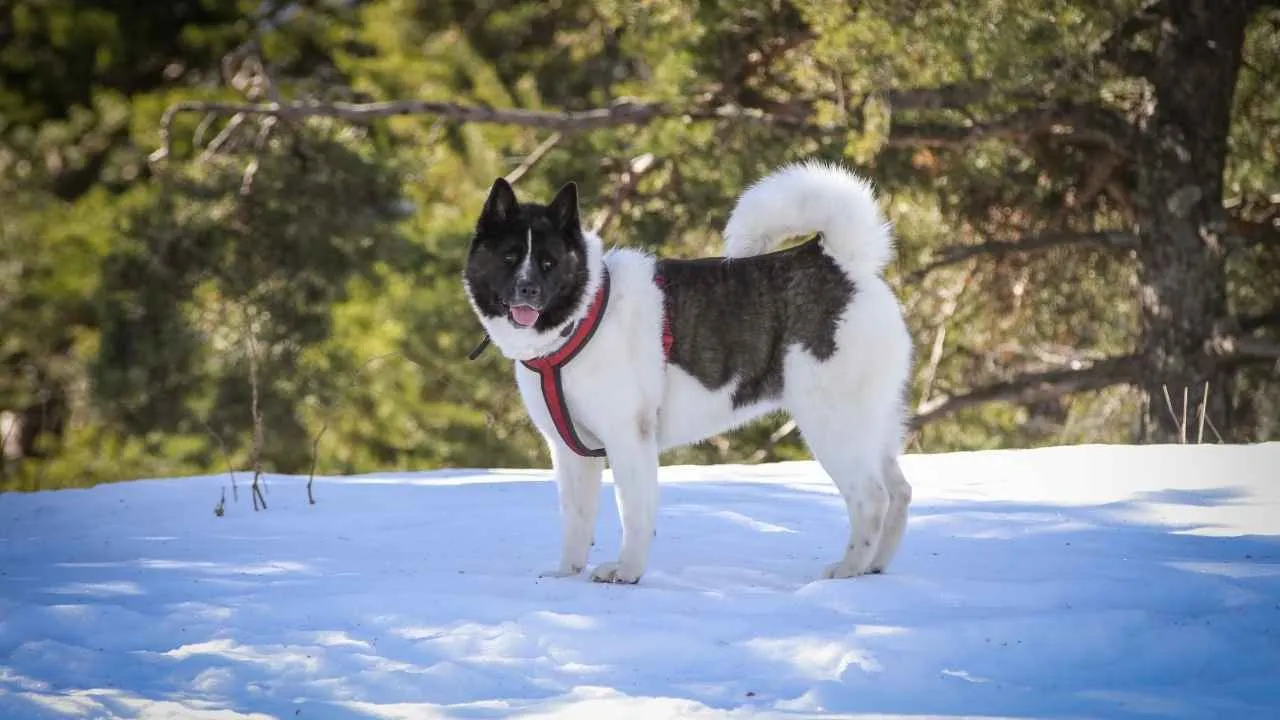
AKC reports that the Akita is a strong, double-coated breed with ancient roots in Japan, known for its noble demeanor, bravery, and unwavering loyalty. Naturally courageous and instinctively protective, the Akita is a formidable guardian. This dignified breed watches over its home with unwavering vigilance, often requiring little formal training to serve as a protector.
This is among the best guard dog breeds. Known for deep loyalty to their families and wariness toward strangers, Akitas take their role as guardians seriously, making them a trusted choice for those seeking dependable protection.
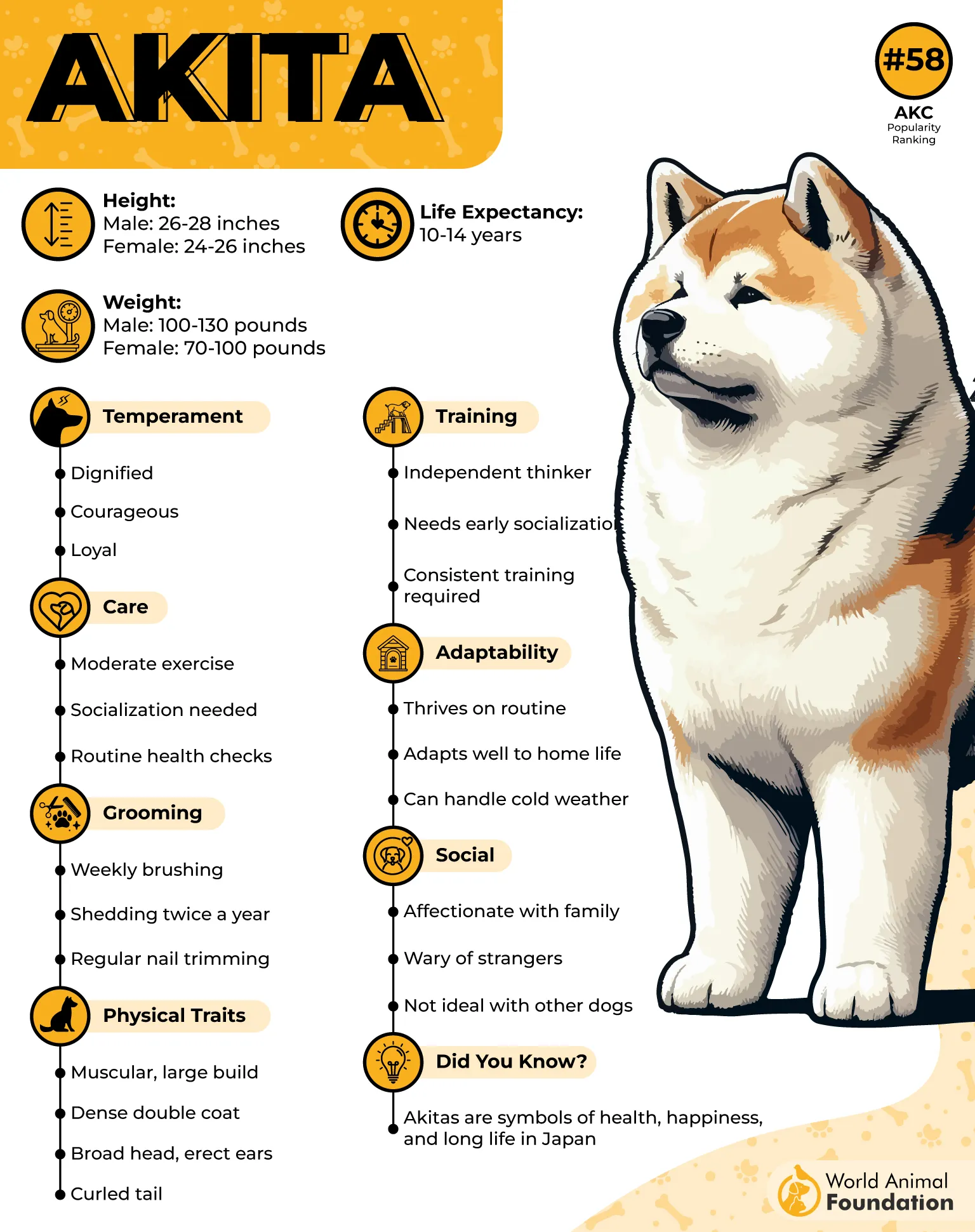
History
The Akita’s roots trace back to 17th-century Japan in the northern Akita prefecture, where noblemen bred powerful spitz-type dogs for hunting and guarding.
Originally reserved for royalty and the imperial court, Akitas were esteemed for their bravery and were often deployed to take down game as large as wild boar and bears. Through centuries of selective breeding, the Akita became both a symbol of cultural pride and a national treasure.
Care and Considerations
Akitas require consistent obedience training and early socialization to temper their strong guarding instincts and prevent aggressive tendencies. Their thick double coat sheds seasonally in heavy clumps and should be brushed weekly, more frequently during shedding periods.
Regular grooming, nail trimming, and dental care are essential for their well-being. Despite their size and strength, Akitas are typically clean and odor-free dogs.
Fun Fact: Helen Keller was the first person to bring an Akita to the U.S. after receiving one as a gift during a visit to Japan.
2. Bullmastiff
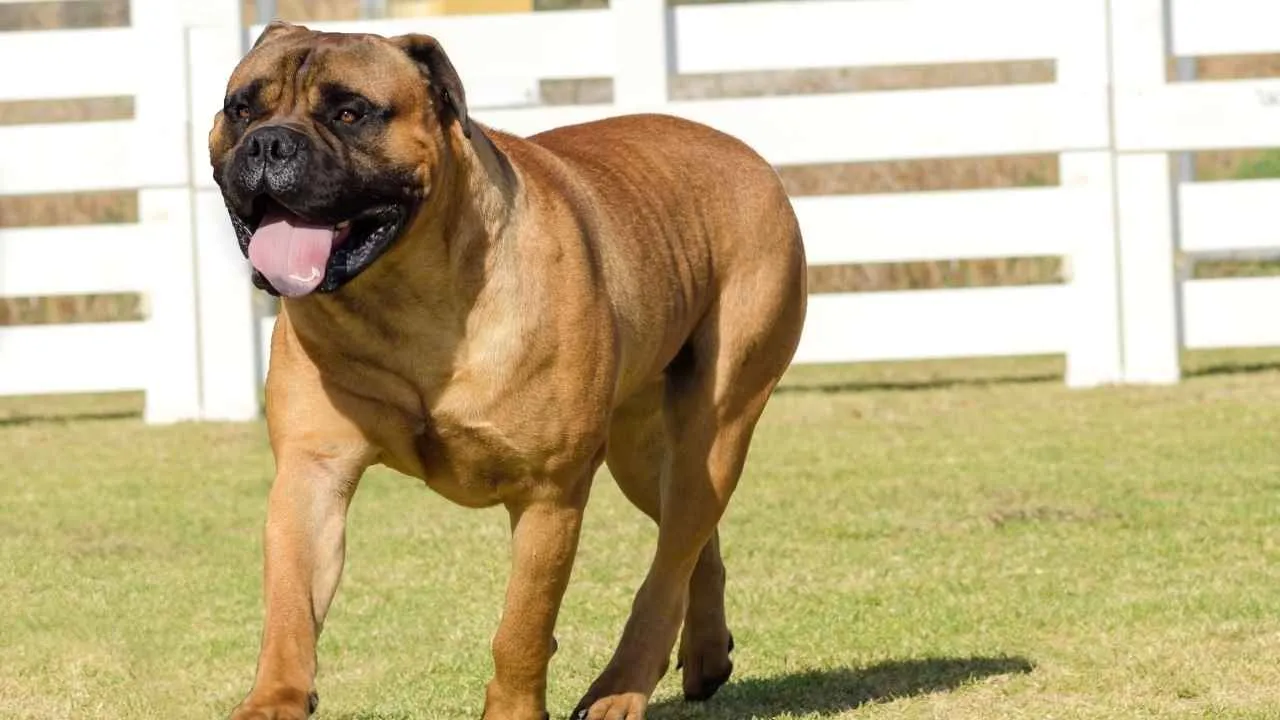
According to PetMD, Bullmastiffs were originally bred to be massive dogs that could respond reliably to commands and serve as protectors against poachers. The Bullmastiff is another standout when it comes to protective dog breeds.
Calm, confident, and physically imposing, this breed combines sheer size with a quiet watchfulness that deters intruders before they ever set foot inside. These dogs are known for thinking before they act, making them excellent guardians in households where safety and restraint are equally important.
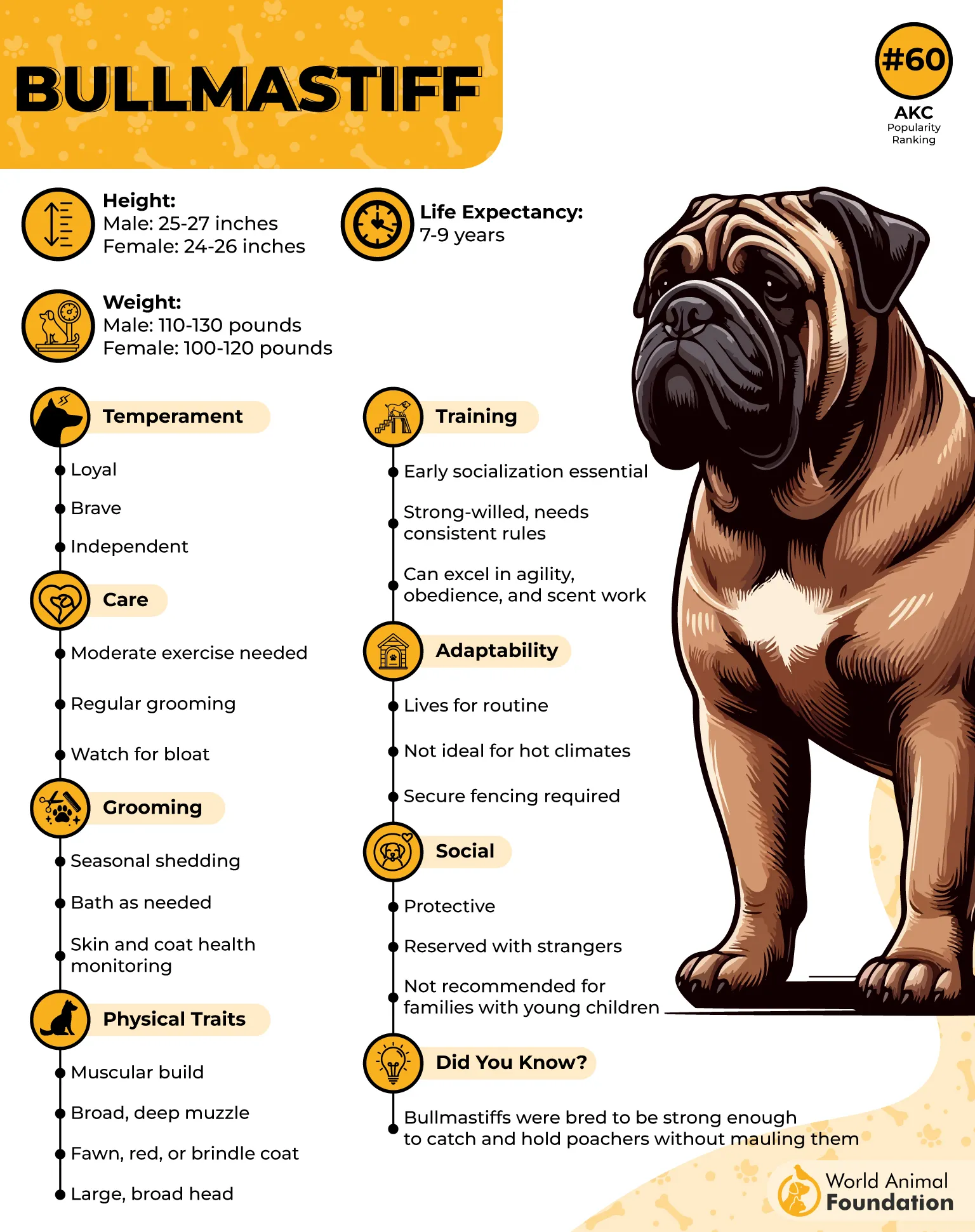
History
Developed in 19th-century England, Bullmastiffs were bred to guard aristocratic estates against poachers. Gamekeepers crossed Mastiffs with Bulldogs in a 60/40 ratio to produce a dog that was big and swift enough to chase down trespassers and strong enough to pin them without inflicting harm. This ideal blend of brains, brawn, and discipline earned the Bullmastiff the nickname “The Gamekeeper’s Night Dog.”
Care and Considerations
These excellent guard dogs require secure, fenced-in yards and should not be relied upon for activities like running due to their bulk. Though their short coat is relatively low-maintenance, it sheds seasonally and benefits from regular grooming.
Monitoring coat health and skin conditions is crucial, as allergies and dietary imbalances can occasionally arise. Moderate daily exercise and a balanced diet help maintain their muscle tone and overall health.
Fun Fact: By 1933, the Bullmastiff had earned full recognition from the American Kennel Club, marking its rise from estate protector to celebrated show dog.
3. Catahoula Leopard Dog
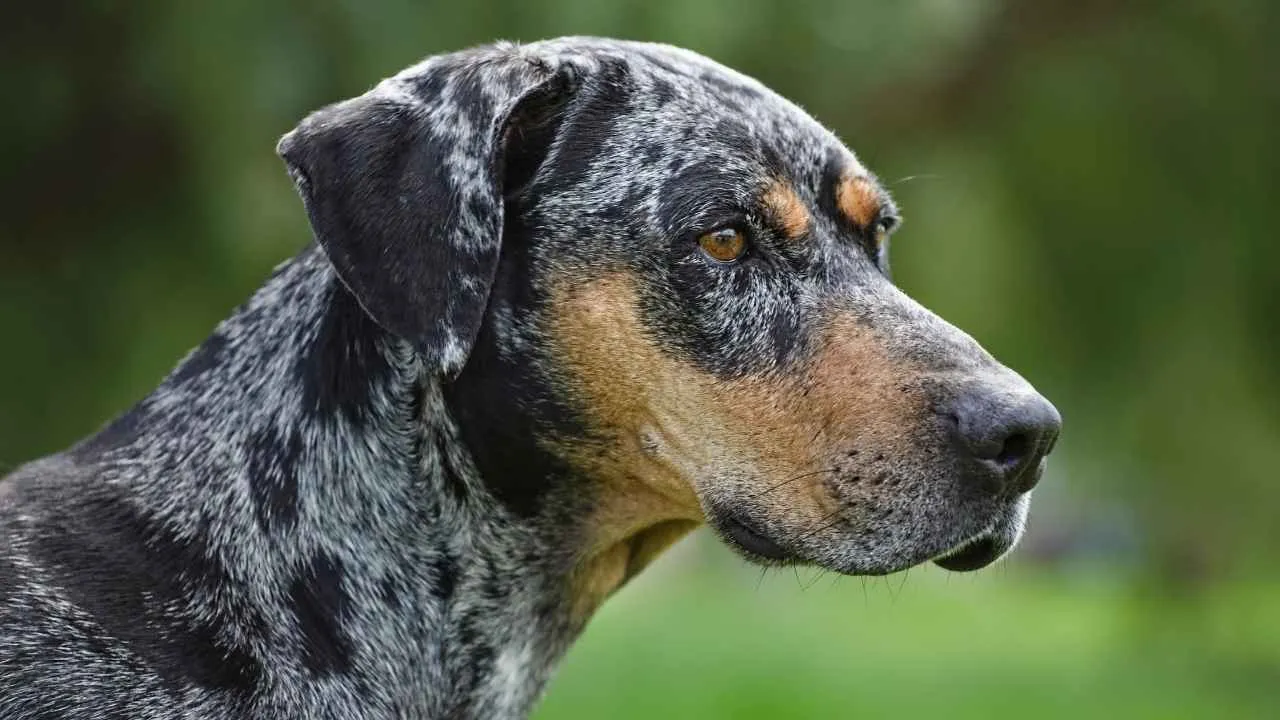
Hills Pet notes that the Catahoula Leopard Dog, also called the Catahoula Cur, Catahoula Hog Dog, or simply Catahoula, gets the “Leopard” part of its name from its distinctive, spotted, multicolored coat.
If you’re searching for a protective dog that also brings athleticism and intelligence to the table, the Catahoula Leopard Dog is a compelling option. With sharp instincts, a loud bark, and strong herding skills, Catahoulas excel at guarding property and alerting their owners to anything out of the ordinary.
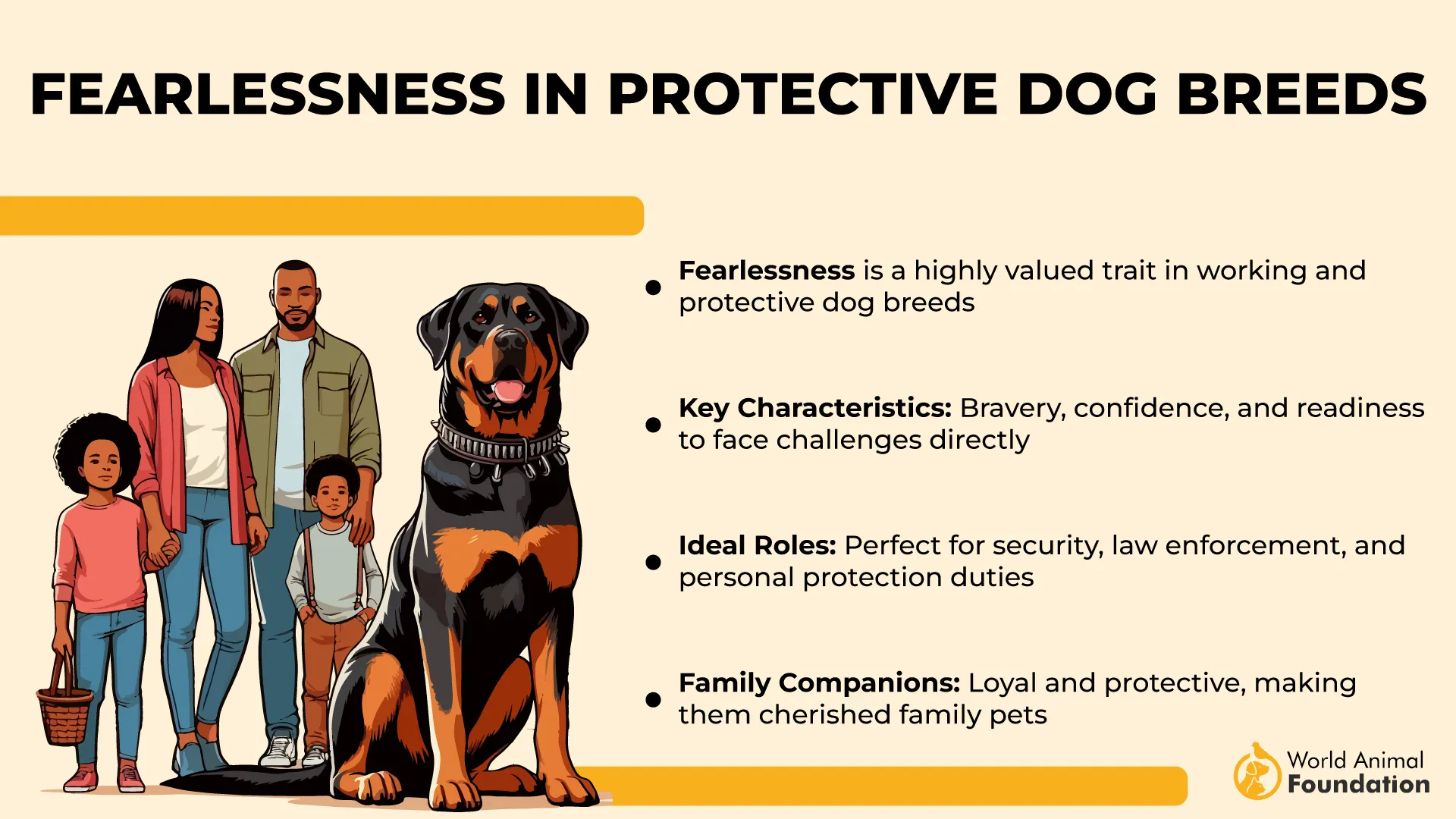
History
The Catahoula’s roots run deep in American soil. Originating from Native American dogs that resembled wolves, these early canines were later bred with European breeds such as bloodhounds, mastiffs, and greyhounds brought by Spanish explorers in the 1500s.
Settlers in Louisiana developed the breed further to manage wild herds of hogs and cattle, and the Catahoula’s unique herding style, creating a “canine fence” around livestock, became a defining trait.
Care and Considerations
Catahoulas have a short, smooth coat that is easy to maintain with weekly grooming and occasional baths. They require early training, plenty of exercise, and mental stimulation to keep their high energy and intelligence in balance.
Routine nail trimming, ear checks, and dental hygiene are essential. These dogs mature quickly, often acting like adults by the time they’re 10 months old.
Fun Fact: Catahoulas are known for their striking coat patterns and were once called “Wolf Dogs” by Native Americans due to their appearance and behavior.
4. Doberman Pinscher
This breed is recognized for its vigilance, athleticism, power, and bravery. Doberman Pinschers are one of the most iconic protection breeds, sleek, loyal, and remarkably intelligent.
Their intimidating presence and alert disposition make them highly effective at guarding homes and properties. Bonding closely with their families, Dobermans are naturally protective and fearless, often taking initiative even without formal training.
History
The Doberman Pinscher was developed in the late 19th century by Karl Friedrich Louis Dobermann in Apolda, Germany. As a tax collector and night watchman, he needed a dependable guard dog and selectively bred breeds like the Rottweiler, German Pinscher, and Weimaraner to create the Doberman. The breed quickly proved effective in police and military service, and was officially recognized by the AKC in 1908.
Care and Considerations
Dobermans are energetic and require daily physical and mental exercise to stay healthy and avoid behavioral issues. Activities like jogging, agility training, or games of fetch are ideal. Their sleek coat is easy to maintain with weekly brushing and occasional baths.
Regular dental care, nail trimming, and vet checkups are important to support their active lifestyle. A well-fenced yard is essential, as these dogs are excellent jumpers.
Fun Fact: A Doberman named Kurt became the first canine casualty of the Battle of Guam in WWII and is honored with a bronze statue at the National War Dog Cemetery.
5. Rottweiler
As per PetPlan, Rottweilers are affectionate companions with a fun-loving side. They are large, powerful dogs known for their loyalty and innate protective nature. Rottweilers are powerful protectors that combine loyalty and intelligence with an intimidating presence.
They can shift from goofy companions to vigilant guardians in an instant, making them excellent watchdogs when properly trained and socialized. Their reserved nature around strangers enhances their reputation as reliable protectors.
History
The Rottweiler’s origins trace back to the Roman Empire, where they were bred from Asian mastiff-type dogs to drive and guard cattle herds for Roman legions.
As these dogs settled in the German town of Rottweil after the empire’s decline, they took on roles as herding and protection dogs, earning the name “Rottweiler Metzgerhund” or “Butcher’s Dog of Rottweil.” Over time, their working roles expanded into police, rescue, and personal protection services.
Care and Considerations
These extremely intelligent dogs thrive with structure, consistent training, and early socialization to keep their guarding instincts in check. Their medium-length coat is coarse and flat, requiring weekly brushing and seasonal maintenance during heavy shedding periods.
Regular dental care and nail trimming are also important. A mentally stimulated Rottie with a task-driven lifestyle is typically well-behaved and deeply bonded to its family.
Fun Fact: Rottweilers played critical roles in disaster response, including search-and-rescue efforts at the World Trade Center and Oklahoma City.
6. Appenzeller Sennenhund
Though smaller than some other large guardian breeds, the Appenzeller Sennenhund is a high-energy, agile watchdog with natural guarding instincts. These Swiss farm dogs are intensely loyal and highly obedient, making them well-suited for guarding homes and properties, especially in rural environments.
History
The Appenzeller Sennenhund, first mentioned in 1853, hails from the Appenzell region of Switzerland. Originally known as a high-pitched barking, multi-colored cattle dog, this spitz-type breed was developed to herd livestock and protect homesteads.
With the efforts of breed enthusiasts like Max Siber and Professor Dr. Albert Heim, the breed gained recognition from the Swiss Cynological Society in 1898 and had its first official standard written in 1914.
Care and Considerations
Appenzellers have a manageable, short, smooth coat that requires brushing just once or twice a week. Regular grooming, including nail trimming and dental care, helps maintain their overall health. These dogs do best with space to roam and a job to do, whether it’s herding or guarding.
They’re rare outside of Europe, but their numbers are slowly increasing in North America through careful breeding.
Fun Fact: Despite their rarity, Appenzeller Sennenhunds are still highly regarded in Switzerland for their farm work and dependable temperament.
7. Caucasian Shepherd Dog
Massive, fearless, and incredibly loyal, the Caucasian Shepherd Dog is a natural guardian breed with a deep-rooted natural instinct for protecting its home and family. Known for their calm demeanor with those they trust and their imposing presence with strangers, these dogs are best suited for experienced owners who can provide early training and structure.
History
Hailing from the Caucasus mountain range spanning parts of Eastern Europe and Western Asia, the Caucasian Shepherd has a lineage that traces back to ancient times. Historically used to protect herds, flocks, and homesteads from predators, they were prized for their strength, courage, and adaptability.
Documented use includes guarding the armies of Armenian Tsar Tigran II in the first century BC. Selection work began in the USSR in the 1920s to standardize the breed’s impressive physical and working traits.
Care and Considerations
Caucasian Shepherds come in varying coat lengths, from short to very long, with longer coats requiring daily grooming to prevent matting. Regular ear cleaning, nail trimming, and dental care are essential to maintain their health.
While they are affectionate with family, they need proper socialization and basic obedience training to safely manage their guarding instincts.
Fun Fact: The Caucasian Shepherd’s rugged resilience allows it to thrive in even the harshest climates, making it a favored guard dog across the vast and varied terrain of the Caucasus.
Conclusion
Choosing the best dog breed for protection is a deeply personal decision shaped by your living environment, family needs, and lifestyle. From confident guardians like the Akita and Bullmastiff to energetic protectors like the Catahoula Leopard Dog and Appenzeller Sennenhund, there’s a reliable breed for every type of home. Still, other formidable defenders like the German Shepherd and Cane Corso have earned global respect for their versatility in police, military, and personal protection work.
Even breeds like the Australian Shepherd and Rhodesian Ridgeback, known more for their herding and hunting skills, possess strong instincts that can be molded into loyal protective behaviors with proper training. Meanwhile, the Tibetan Mastiff, Belgian Malinois, and Giant Schnauzer stand out for their fearlessness, trainability, and ability to live harmoniously with other pets, including other dogs and animals.
Whether you live in a rural area or a suburban home, these dog breeds offer more than just security, they bring unwavering companionship and dedication. The key lies in understanding each dog’s temperament, grooming needs, and exercise requirements, ensuring they not only guard your property but also thrive as beloved family members.


